Japanese indoor LED luminaires and designs were especially highlighted at the 3rd Design Lighting Tokyo expo. Two designated lighting display areas Proto Lighting and Next Lighting allowed designers and new manufacturers to display the latest lighting design products.
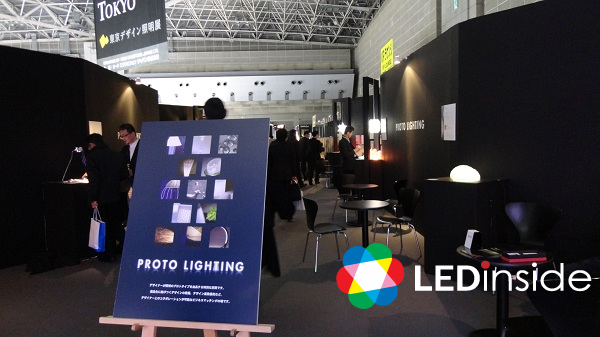 |
 |
|
Top: Proto Lighting area is an open space that allows designers to display specially designed luminaires. Bottom: Next Lighting zone consists of small booths that allows designers or new design companies to display their latest products. (All photos courtesy of LEDinside) |
LED luminaires integrate traditional Japanese designs
Designers and luminaire manufacturers all turned to Wafu, traditional Japanese style designs at this year’s show. The luminaires integrate traditional Japanese culture and items to create Wafu style luminaires.
Toyo Ceramix
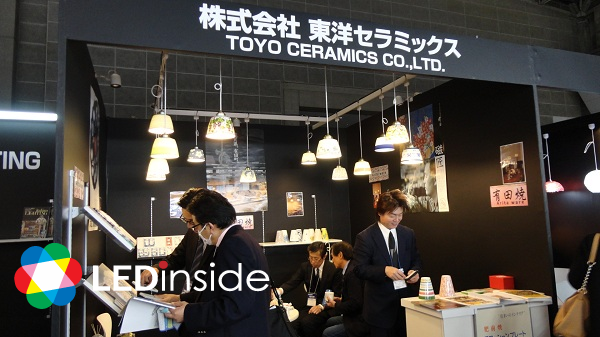 |
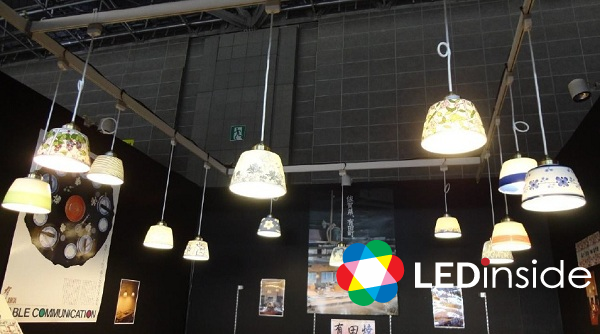 |
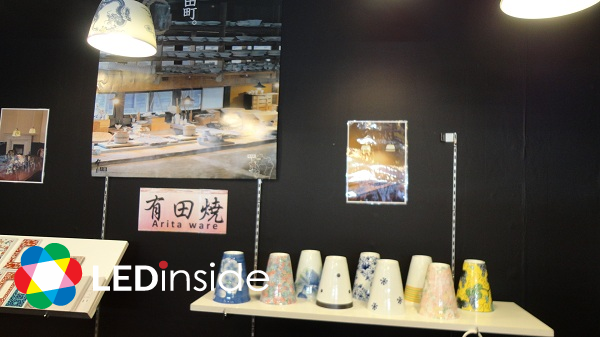 |
|
Toyo Ceramix LED products play on the company's strengths as a traditional Japanese ceramic maker. |
Ceramic manufacturer Toyo Ceramix, has combined traditional Japanese ceramics Arita ware with LED lights. The company has created six models, and 25 colorful Arita patterns to choose from. Dimensions of the lights include a diameter of 18 cm, with a height of 12.5 cm and weight of 750 grams. The residential lights can be paired with 50 cm or 100 cm cables.
Will Electronics
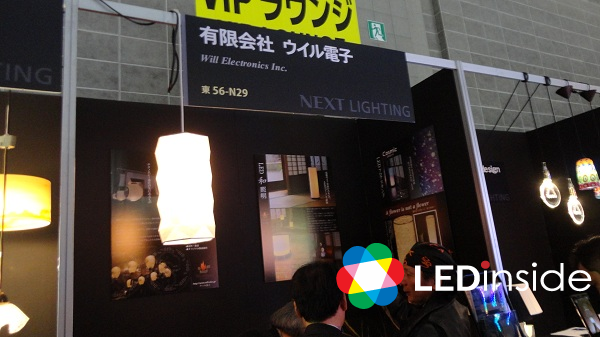 |
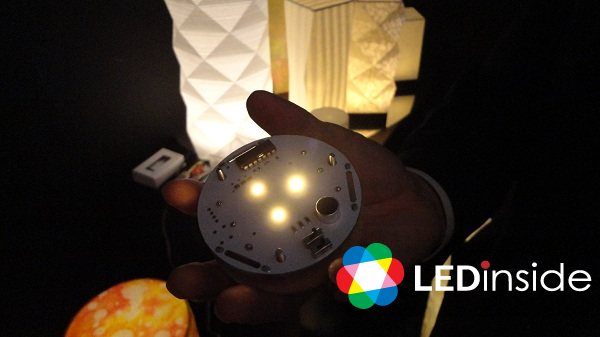 |
|
A sensor built in the LED module, enables the lights to turn off when the lights are “blown out”. |
Electronic machines and substrate manufacturer Will Electronics has launched a series of “battery chargeable washi LED luminaires.” The products integrate a type of Japanese paper, washi, with battery LED modules to make Japanese-style LED candles and lanterns. The products are integrated with a sensor device that enables the candles to be blown out.
Feel Lab
 |
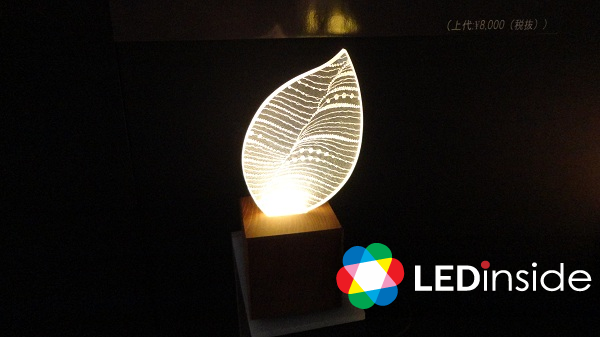 |
|
Top: Feel Lab's booth at Lighting Japan 2015. Bottom: Feel Lab's leaf-shaped ultra-thin 2W LED luminaire is made from silk. |
Feel Lab was founded by designer Yasuhito Genma. The design firm’s lighting product “Leaf” is a handmade ultra-thin 2W LED luminaire product is woven from silk by Kyoto craftsmen in Japan. The luminaire is less than 10 mm thick.
Another Japanese lighting designer Yuko Sano also used natural elements, such as China-fir, or Cunninghamia integrated with clay and lights to create a unique and indirect lighting space.
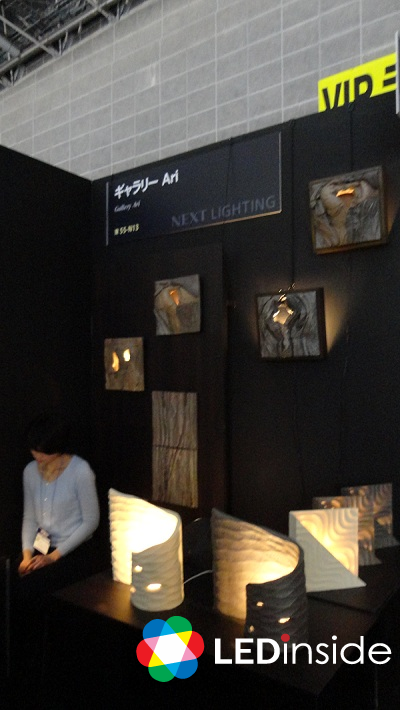 |
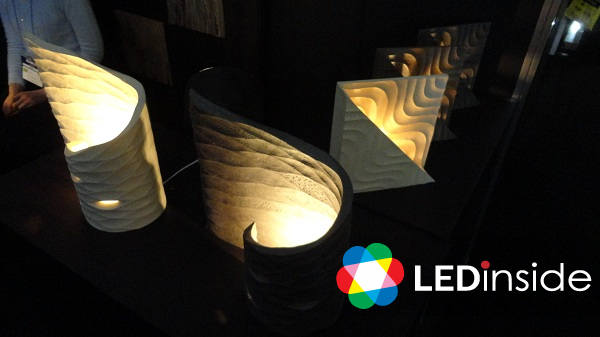 |
|
Top and bottom: Yuko Sano's LED luminaires crafted from Cunninghamia wood and clay. |
Abiobi
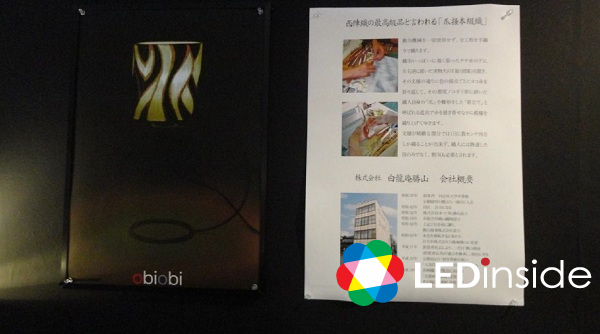 |
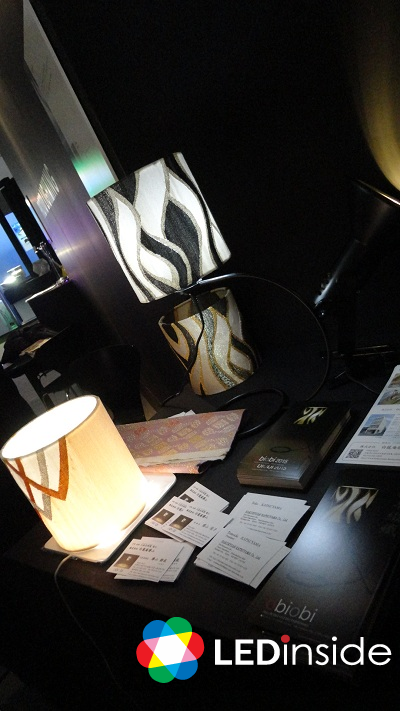 |
|
Abiobi designer uses traditional Japanese textile in luminaire creations. |
Abiobi designer Mayumi Kondo employed the best quality traditional Japanese textile, Nishijin-ori. This specific textile is used from employing an ancient Kyoto weaving textile technique called tsumekakihon tsuzureori (爪搔本綴織).
con farfalle III
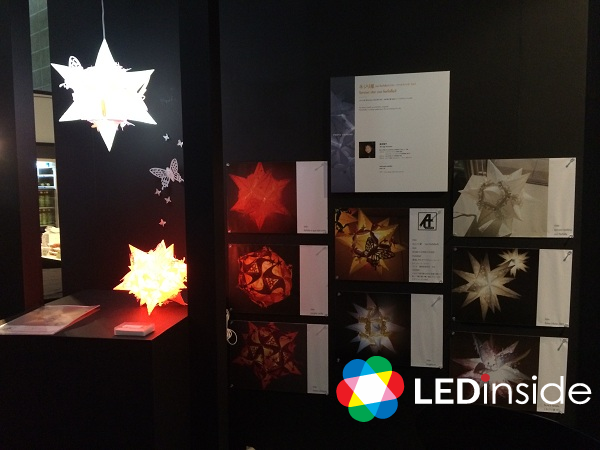 |
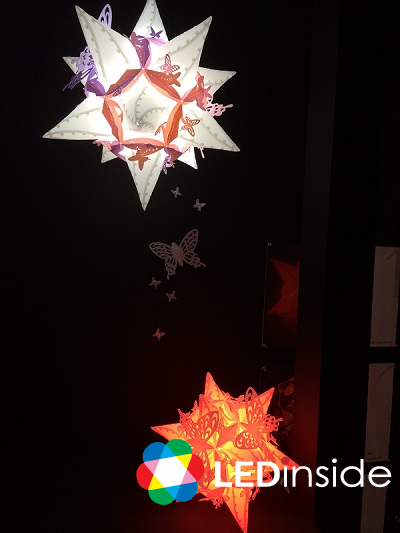 |
|
Moco emoca's LED luminaires feature extravagent patterned butterflies surrounding star-shaped luminaires. |
Designer moco emoca (Tomoko Morimoto) displayed an 8W luminaire coined con farfalle III. The outer shell of the luminaire is made from polypropylene (PP), and showcases butterflies fluttering around stars. Farfalla comes from the Italian word for butterflies.
At this year’s lighting show, there were more cross-industry cooperation in the LED lighting industry, according to LEDinside observations. Lighting designs are no longer concerned with pragmatic designs or aesthetics, designers and manufacturers are focusing on raising LED lighting’s added value in the near future.
(Author: Ivan Lin, Editor-in-Chief, LEDinsidehttp://Translator: Judy Lin, Chief Editor, LEDinside)





 CN
TW
EN
CN
TW
EN




















